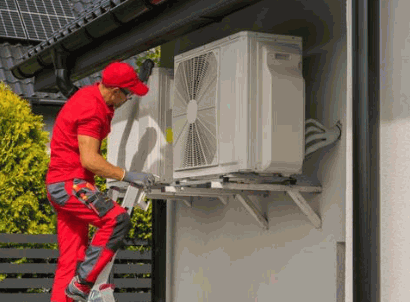Air source heat pumps are gaining popularity as an efficient and eco-friendly heating solution for homes, especially in the context of renewable heating systems.
This article explores what air source heat pumps are, how they operate, and the various benefits they offer, such as energy savings, heat pump installation, and versatility in installation.
It also discusses different types of air source heat pumps, key factors to consider before installation, and the steps involved in the installation process.
Whether you’re considering upgrading your heating system or just curious about this technology, valuable insights await you here.
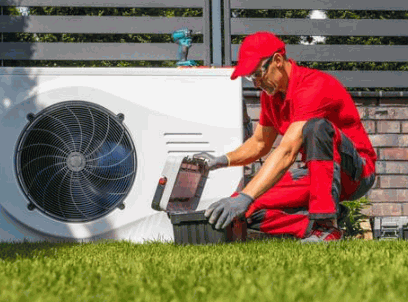
What Is An Air Source Heat Pump?
An air source heat pump (ASHP) is a renewable heating system that extracts heat from the outdoor air and transfers it indoors to provide efficient central heating and hot water, significantly lowering energy bills. This innovative technology is becoming increasingly popular in regions like South London, where the focus is on energy efficiency and reducing carbon footprints. Experts advocate for its advantages in modern home improvements, making it an essential consideration for eco-conscious homeowners looking to enhance their heating capabilities while lowering their energy bills.
Dig Deeper: What Is An Air Source Heat Pump
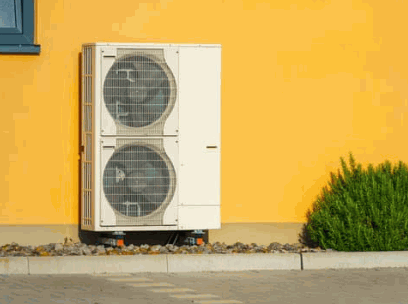
How Does An Air Source Heat Pump Work?
An air source heat pump works by utilizing a refrigerant circuit to absorb heat from the outdoor air, even in cold temperatures, and then transferring that heat indoors to effectively warm up the heating system. This innovative technology is designed to work efficiently in various climates, harnessing energy from the atmosphere in a sustainable manner.
In a typical setup, the system consists of several key components: the outdoor unit, which houses the compressor and fan, and draws in outside air; the indoor unit, responsible for distributing heat within the space; and the intricate electrical wiring that connects these units seamlessly.
Together, they create a refrigerant circuit that facilitates heat exchange. During installation, it’s crucial to ensure proper ductwork and placement of the units for maximizing efficiency.
Regular maintenance, including cleaning filters and checking refrigerant levels, is essential to keep the system running smoothly and ensure that homeowners enjoy optimal system performance year-round.
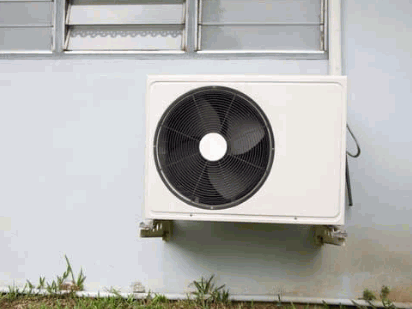
What Are The Benefits Of Installing An Air Source Heat Pump?
Installing an air source heat pump offers numerous benefits, including enhanced energy efficiency, significant savings on energy bills, and effective temperature control throughout the home, making it a smart choice for modern heating solutions.
Energy And Cost Savings
One of the primary benefits of installing an air source heat pump is the potential for substantial energy savings, which can lead to lower heat pump costs and reduced energy consumption over time.
This innovative technology not only reduces the carbon footprint but also significantly lowers heating bills. While the upfront installation costs, including those for hot water cylinders, might seem daunting at first glance, a closer examination reveals that these systems can offer a favorable return on investment. For instance, an air source heat pump can save homeowners around 50% on their heating costs compared to traditional systems like gas boilers.
- Installation Costs:
- Air source heat pump: $10,000 – $15,000
- Gas boiler: $5,000 – $8,000
The long-term energy savings associated with heat pumps often offset these initial expenses, making them an attractive choice for eco-conscious consumers looking to maximize efficiency and minimize their energy bills over time.
Environmentally Friendly
Air source heat pumps are considered environmentally friendly as they significantly reduce the carbon footprint of residential heating systems by utilizing renewable energy sources instead of fossil fuels.
Plus their inherent energy efficiency, these systems play a vital role in the UK’s broader sustainability efforts. By integrating air source heat pumps into homes, individuals can take advantage of various government incentives designed to promote greener technologies.
For instance, the
- Boiler Upgrade Scheme
- Microgeneration Certification Scheme
offers financial support to homeowners and businesses looking to implement cleaner heating solutions.
These initiatives, including the Boiler Upgrade Scheme and Microgeneration Certification Scheme, not only incentivize adopting such technology but also contribute significantly towards the UK government’s ambitious goal of achieving a 68% reduction in carbon emissions by 2028. As more households switch to ASHPs, the collective impact on reducing greenhouse gas emissions stands to benefit both the environment and communities substantially.
Versatile Installation Options
The versatility of air source heat pump installation allows for various configurations, including ductless mini splits that can accommodate different heating capabilities and comfort levels in a range of home settings, optimizing temperature control.
When considering installation options for air source heat pumps (ASHPs), the selection often boils down to how indoor and outdoor units can be tailored to meet a home’s specific needs based on heating load. For instance, ducted systems involve connecting the heat pump to pre-existing ductwork, ensuring efficient distribution throughout the entire space. Alternatively, ductless systems can be installed directly into individual rooms, providing targeted comfort without extensive renovations.
- Indoor Unit Configurations: Wall-mounted units, floor-mounted units, or ceiling cassettes
- Outdoor Unit Options: Ground-mounted or wall-mounted units
Factors like the size of the home, climate conditions, and existing heating systems play pivotal roles in determining installation time and costs. Therefore, a detailed assessment by a qualified technician can streamline the process and offer tailored solutions, ensuring optimal performance and efficiency.
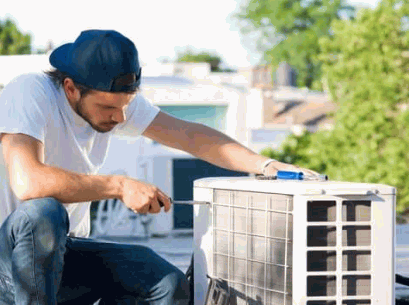
What Are The Different Types Of Air Source Heat Pumps?
There are several types of air source heat pumps available, including air-to-air heat pumps, air-to-water heat pumps, and hybrid heat pumps, each offering unique heating solutions suited to different needs and preferences.
Air-to-Air Heat Pumps
Air-to-air heat pumps primarily provide heating and cooling by transferring air directly between the indoor and outdoor units, making them an efficient option for homes looking to avoid ductwork.
These systems operate by extracting warmth from outdoor air even in chilly conditions, efficiently converting it for indoor use. Energy efficiency is one of their standout features, often leading to substantial savings on energy bills.
Installation typically requires minimal modifications, as they can fit seamlessly into various residential designs. Air-to-air heat pumps are commonly applied in homes seeking to take advantage of their dual functionality for both heating in winter and cooling in summer.
- Ideal for moderate climates
- Lower operational costs compared to traditional systems
- Eco-friendly alternative to conventional heating methods
With their versatility, they are becoming increasingly popular among homeowners aiming for sustainable and effective climate control solutions.
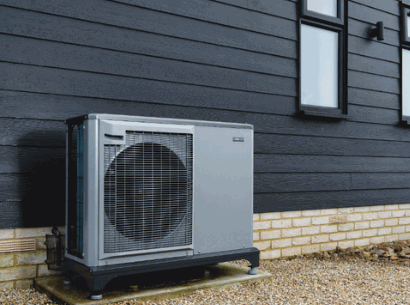
Air-to-Water Heat Pumps
Air-to-water heat pumps are designed to provide central heating and hot water by transferring heat from the outside air to a water-based heating system, often coupling with a hot water cylinder.
These systems operate by drawing in ambient air and using a refrigerant cycle to extract heat, which is then transferred to the water circulating in the home. One of the primary advantages is their compatibility with existing heating systems, making it easier and more cost-effective for homeowners to upgrade. For instance, when integrated with traditional radiators or underfloor heating, air-to-water heat pumps can work efficiently, even in colder climates.
Using a hot water cylinder enhances the system’s capacity to store energy, ensuring that hot water is available on demand. This can lead to substantial energy savings over time and a reduction in carbon emissions.
Here are some benefits of coupling air-to-water heat pumps with hot water cylinders:
- Increased efficiency throughout various seasons
- Enhanced hot water availability during peak times
- Lower operating costs compared to conventional systems
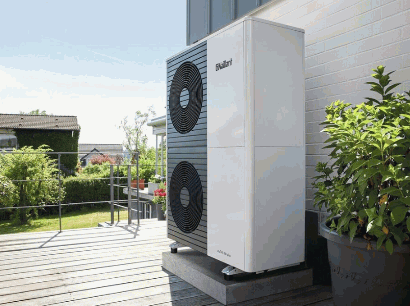
Hybrid Heat Pumps
Hybrid heat pumps combine the benefits of air source technology with traditional systems, allowing for seamless switching between an air source heat pump and a gas boiler or electrical resistance heating, optimizing energy use. This innovative approach not only reduces reliance on conventional fuels but also enhances efficiency across diverse environmental conditions.
By utilizing both hybrid systems and renewable resources, homeowners can experience remarkable advantages, including:
- Cost Savings: Reducing energy costs through intelligent switching during peak and off-peak periods.
- Environmental Impact: Lower carbon emissions contribute positively to sustainability efforts.
- Climate Adaptability: Effectively managing heat production based on seasonal demands for optimal performance.
These systems not only improve comfort levels but also provide a valuable solution for those looking to enhance energy efficiency in their homes.
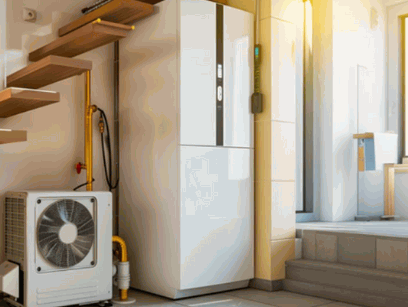
What Factors Should Be Considered Before Installing An Air Source Heat Pump?
Before installing an air source heat pump, several factors must be carefully considered, including the climate of the location, the heating load required for the home, and the overall cost and budget for the installation process, as well as the importance of energy-efficient practices.
Climate And Location
The climate and location play a crucial role in the performance of an air source heat pump, as temperature fluctuations can directly affect its efficiency, heating capabilities, and maintenance required over time.
In regions with significantly colder temperatures, the choice of heat pump, such as the Aerona³ heat pump, becomes particularly important. These areas often experience greater heat loss, demanding a system that can compensate effectively.
For optimal performance, a thorough heat loss assessment, often conducted by trained heating engineers, is essential before installation. This evaluation helps determine the right capacity and model, ensuring adequate heating even during extreme weather. Homeowners should consider, alongside other factors:
- Local climate conditions and their impact on heat pump efficiency, as outlined in the National Home Energy Survey.
- Potential variations in energy costs associated with different models, as indicated in the Financial Times.
- Long-term reliability and maintenance needs of the selected unit.
By understanding how climate influences energy efficiency, one can make more informed decisions and enhance overall system performance.
Size And Efficiency
Selecting the right size and efficiency of the air source heat pump is essential to meet the heating load requirements of the home while maximizing energy efficiency.
Conducting a heat load assessment involves evaluating various factors that affect a home’s heating requirements, making it critical for ensuring comfort and cost-effectiveness. Homeowners should consider aspects such as insulation quality, the size of windows, and even the orientation of the property when calculating their heating needs.
To begin, one can follow these steps:
- Measure the square footage of each room.
- Identify the insulation levels and any potential air leaks.
- Assess the number and type of windows.
Correctly sizing the unit directly impacts not only energy bills but also the longevity and efficiency of the system, making it crucial to consult certified plumbers for guidance. Understanding the unit’s efficiency ratings will ultimately dictate how well it performs over time, leading to substantial savings on energy costs.
Cost And Budget
When considering an air source heat pump, evaluating installation costs and conducting a cost comparison while comparing quotes from certified plumbers can significantly impact your budget and potential energy bill savings.
To ensure a well-informed decision, homeowners should approach budgeting for installation by first outlining all expected expenses, including a detailed quote comparison. This includes not only the cost of the unit itself but also labor, permits, maintenance required, and any additional materials that may be needed. Incorporating potential government grants or subsidies, such as those from the Boiler Upgrade Scheme and Grant UK, into the equation can help ease the financial burden and make the investment more attractive.
- Research available incentives on local or national levels.
- Consult certified installers to understand their pricing structures.
- Request multiple quotes to benefit from competitive pricing.
By diligently comparing these quotes and consulting with training providers, one can uncover the most cost-effective options that align with specific heating needs, ultimately benefiting both the wallet and the environment.
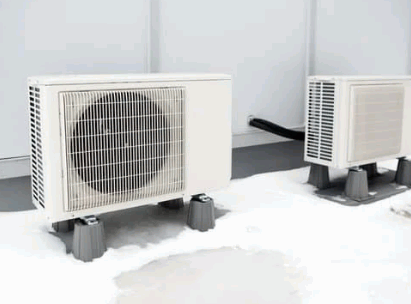
What Is The Installation Process For An Air Source Heat Pump?
The installation process for an air source heat pump typically involves several key steps, including site assessment, selecting the right heating engineer, determining installation time, and ensuring proper electrical wiring and refrigerant hose connections.
Site Assessment And Planning
Conducting a thorough site assessment and planning phase is crucial to ensure that the air source heat pump will meet the heating load requirements and function effectively in the given environment, considering insulation levels.
When evaluating the site, it’s essential to consider several key elements that can significantly impact performance, including the connections for the refrigerant hose. Factors such as the placement of both outdoor and indoor units play a vital role in efficiency. While selecting a location for outdoor units, one should take into account:
- Proximity to existing electrical connections
- Protection from extreme weather conditions
- Clear airflow to maximize heat exchange
An in-depth assessment of insulation levels is important to identify potential heat loss areas within the structure. Evaluating existing heating systems also helps determine whether upgrades or modifications are necessary to achieve optimal performance, ultimately leading to enhanced energy savings and comfort.
Choosing The Right Size And Model
Choosing the right size and model of an air source heat pump is vital for optimizing its heating capabilities and ensuring efficient energy consumption.
When evaluating various units, it is essential to consider their efficiency ratings alongside their capacity. This entails reviewing the Seasonal Performance Factor (SPF), which indicates how well the unit generates heat over a typical heating season. It is crucial to assess the heating load calculations of your home to understand how much heat is actually required.
- Efficiency Ratings: Look for models with higher ratings for better performance.
- Capacity: Ensure the unit can adequately heat the space, preventing energy wastage.
- Alignment: Matching a pump’s specifications with your home’s needs can lead to significant energy savings.
By thoughtfully considering these factors, including the input from experienced heat pump installers, you can make a more informed decision that will enhance comfort while reducing energy costs.
Installation Of Indoor And Outdoor Units
The installation of both indoor and outdoor units requires careful attention to detail, ensuring proper connections for the refrigerant circuit and electrical wiring for optimal performance.
To achieve peak efficiency, positioning each unit necessitates consideration of airflow and proximity to power sources. Start by selecting a location for the indoor unit that allows unobstructed airflow; this could include placing it high on a wall to maximize the cooling effect without obstruction. Meanwhile, the outdoor unit should be positioned in a shaded area to prevent overheating and promote cooling efficiency.
- Next, carefully connect the refrigerant hose, ensuring there are no kinks or sharp bends, which could impede fluid flow and system performance.
- It’s essential to double-check all seals and connections for leaks to avoid potential system failures.
Proper installation of the condensate outlet is critical; make sure it is set at a downward angle to facilitate drainage away from the unit, effectively preventing water pooling that could lead to damage and potential system failures.
Connection To Existing Heating System
Connecting the air source heat pump to the existing heating system is a crucial step that enhances its overall heating capabilities and ensures seamless operation, especially in alignment with the UK government’s 2028 target.
To achieve optimal efficiency, it is imperative to understand how the heat pump interacts with different systems, such as traditional radiators or underfloor heating, particularly under the guidance of a qualified heating engineer. Each type of heating infrastructure, including those outlined in the BEIS Skills Training Competition, has its unique requirements and methods of integration.
- For radiators, ensuring they are sized correctly can help maintain comfortable room temperatures even at lower flow rates.
- With underfloor heating, compatibility becomes vital, as these systems usually operate at lower temperatures, which align well with the heat pump’s output.
Assessing features like the heating zone’s layout and ensuring insulation quality will further enhance the heat pump’s effectiveness.
Consulting with professionals who specialize in integrating these technologies can significantly simplify the process, ensuring every component works harmoniously for reliable and efficient performance.
Testing And Commissioning
After installation, thorough testing and commissioning are essential to verify the system performance and address any maintenance required to ensure long-term efficiency.
The process of testing and commissioning involves monitoring several key aspects to confirm that everything operates as intended. This includes checking system performance, ensuring proper refrigerant levels, assessing airflow, and evaluating electrical connections. The aim is to identify any potential issues before they become problematic.
- Regularly scheduled checks, as highlighted on BBC One and BBC Radio, contribute significantly to the longevity of the heat pump.
- Evaluating energy consumption can reveal efficiency improvements.
- These assessments help in adhering to warranty requirements.
By prioritizing these evaluations, homeowners can ensure their systems operate optimally, which in turn leads to energy savings and enhanced comfort, ultimately reflecting in the Daily Express and The Telegraph’s recommendations.
